
Americans need to eat a variety of food in their diets. A balanced diet includes fruits, vegetables, meat, dairy products, such as cheese, and grains. Consuming different foods ensures that you receive all essential nutrients through your diet. Nutrient-dense foods, like meat and cheese, provide many nutrients in relation to calories. Meat and cheese also provide sources of protein, which helps to build muscle.
Benefits
Meat provides many essential nutrients. Meat contains protein, which helps build, maintain and repair muscle tissue, as well as iron, which carries oxygen in the blood and helps energy metabolism. Young children, teens and pregnant women often lack iron in their diets, according to the University of Kentucky. Meat also provides a source of zinc. An adequate supply of zinc ensures the proper function of appetite, taste, the immune system and reproduction. Meat products also contain phosphorus. This mineral helps carbohydrate, protein and fat metabolism. It also helps to build strong bones in combination with calcium and vitamin D.
Cheese contains similar nutrients to meat. Cheese provides protein and phosphorus, along with many other nutrients. Calcium helps to build strong bones, and cheese contains high amounts of this mineral. A 100-gram serving of soft cheese supplies 30 to 40 percent of the daily protein recommendation, according to the Dairy for All Web site. Vitamins A and B12 are found in the milk used to make most cheeses. Vitamin A promotes healthy vision while vitamin B12 helps to release energy in the body.
Types
Meats and cheeses comes in many varieties. Fish, chicken, beef and pork are all meat choices. Some cuts of beef include sirloin, chuck, ground and flank. These cuts of beef vary in toughness and flavor. Fish contains lower amounts of fat than other meats. Examples of fish include salmon, tuna, flounder, cod and bass. Cheese also comes in many varieties to choose from. Some examples of cheese include Swiss, Monterey jack, Colby and jalapeno.
Diet Awareness
Some varieties of meat and cheese contain many calories. Increasing calories in a diet can lead to weight gain. Some varieties of meat contain high amounts of fat, which adds to caloric content. Steaks with significant deposits of fat add calories. You can remove the fat to reduce the caloric content. Cheese also contains milk fat. You can select low-fat cheeses, which provide fewer calories. Low-fat cheeses are made from skim milk, which contains fewer calories than full-fat milk.
Considerations
A healthy diet includes foods from each section of the food guide pyramid. Eating only meat and cheese will omit certain nutrients in the diet. For example, meat and cheese do not provide vitamin C. The antioxidant vitamin C helps prevent illness by combating free radical damage. Meats and cheeses also does not contain fiber. Including fiber in the diet helps to provide slow energy to prevent hunger. Fiber also eliminates waste in the body.
Cheese contains lactose from the milk it's made from. You should minimize your cheese intake if you are lactose-intolerant.
Warning
Meats and cheeses provide high amounts of protein. Each one-ounce serving of either food provides seven grams of protein. Consuming too much protein in your diet puts a strain on your kidneys. The kidneys help process protein in the body by breaking the protein molecules into smaller nutrients called amino acids. Consume high-protein foods like meat and cheese in moderation to relieve the kidneys.
Some varieties of meat and cheese provide fat. A diet high in fat can increase the risk of heart disease, stroke and cardiovascular disease. High-fat meats include hamburger, hot dogs and sausage. Swiss, mozzarella, feta and blue cheese contain high amounts of fat. You can choose low-fat cheeses to lower your intake of fat.
Related Articles

A List of Foods That Contain Choline

Food Sources of Phosphatidylcholine
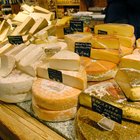
What Type of Microorganism Is Used to ...
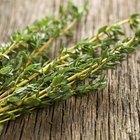
Natural Herbs & Food for Hair Growth

How to Make Your Own Lean Cuisine

How to Cook Moose Steaks

Zinc & Copper for Aging Skin
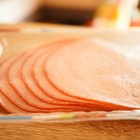
Ham Nutrition Information

A List of Foods Containing Microbes
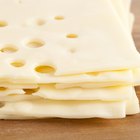
Nutrition in Swiss Vs. American Cheese

Foods to Avoid to Prevent Gout

Swiss vs. Cheddar Cheese Nutrition ...

Are Bean Sprouts Good for You?

How to Tenderize Jerky

How to Make Jalapeno Beef Jerky
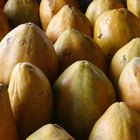
List of Foods That Are Commonly ...

Vitamin B2 for Hair Growth

Can You Change Skin Tone with Food?
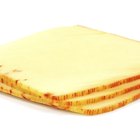
Muenster Cheese Health Benefits
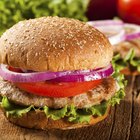
Calories in a Turkey Burger With Cheese
References
Writer Bio
Andy Yurechko has been writing professionally since 2006. He is a registered dietitian and his expertise includes nutrition and fitness. He completed an Olympic distance triathlon for charity in 2006. His work appears on LIVESTRONG.COM. Yurechko holds a Bachelor of Science and a Master of Science in nutrition from the Indiana University of Pennsylvania.
Photo Credits
Cheese. Cheddar , cream , and feta cheese on a plate image by L. Shat from Fotolia.com